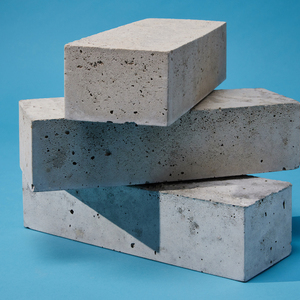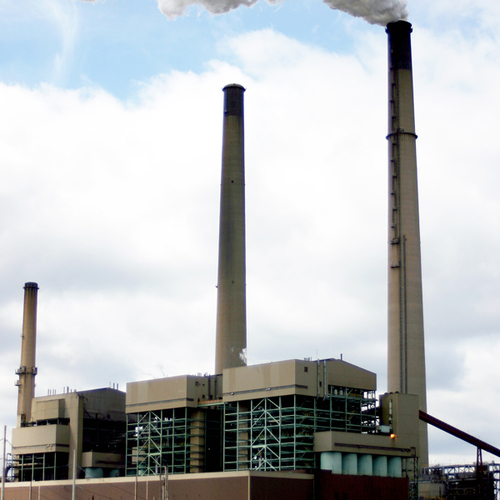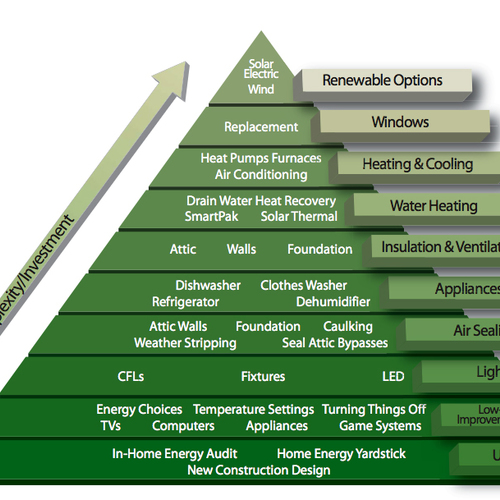
GBA published an energy quiz in 2009, and another one in 2011. It looks like we’re overdue for another installment.
Answers are provided at the bottom of this column; don’t peek until you’ve finished the quiz.
1. True or false: In freezing climates, a drainback solar hot water system circulates ordinary water (without any antifreeze) through its solar collectors.
(a) True.
(b) False.
2. Which of the following statements best describes the “cold OSB problem”?
(a) OSB sheathing is more at risk when stud cavities are filled with thick insulation than thin insulation.
(b) When OSB gets very cold, the adhesive that binds the wood flakes may fail.
(c) OSB can fail if it is covered on the exterior with a thick layer of rigid foam.
(d) Researchers have not succeeded in developing an OSB sleeping bag.
3. The International Residential Code includes a table listing prescriptive requirements for insulation and windows. The column labeled “fenestration U-factor” shows:
(a) Minimum U-factors for windows.
(b) Maximum U-factors for windows.
(c) The confusion rate for readers with low Understanding Factors (i.e., low U-factors) who are forced to decipher code documents.
4. Which of these statements is true?
(a) No roof assembly can dry to the exterior.
(b) All roof assemblies can dry to the exterior.
(c) Some roof assemblies can dry to the exterior.
(d) Roofs in Seattle are always wet.
5. Which of these statements is most likely to be true for a certified Passivhaus?
(a) The house has Zehnder windows, a Siga heat-recovery ventilator, and Intus tape.
(b) The house has Intus windows, a Zehnder heat-recovery ventilator, and Siga tape.
(c) The house has Siga windows, an Intus heat-recovery ventilator, and Zehnder tape.
(d) The windows cost too much.
6. Compared to exhaust-only ventilation systems, heat-recovery ventilation (HRV) systems have several advantages. Which…
Weekly Newsletter
Get building science and energy efficiency advice, plus special offers, in your inbox.

This article is only available to GBA Prime Members
Sign up for a free trial and get instant access to this article as well as GBA’s complete library of premium articles and construction details.
Start Free TrialAlready a member? Log in















17 Comments
Is there a (politically) correct anwer for #20?
Given that JoeL hails from the wilds of Canuckistan ( thus not a REAL American ), and not from the Czech Republic how are we supposed to parse the questions/answers? ;-)
Response to Dana Dorsett
Dana,
Good catch! Everyone gets to add one point to their score because of my error.
I have corrected the phrasing of question #20. Even if it is isn't technically correct, I'm still not changing the punchline.
What do you call the German who gets stuck with the tab?
Sour kraut.
Awwww! I got #18 wrong. I
Awwww! I got #18 wrong. I picked "c", not "a". Educate me, Martin. Actually, I enjoyed more the obviously impossible answers more than the rest of the test. Most entertaining were 3c, 7d, 11d, and 13d.
Response to Dick Russell
Dick,
Emissivity and emittance are synonyms.
Water vapor permeability is the rate of water vapor diffusion through a sheet of any thickness of a material. Permeability is a property of a material. For example, the permeability of polystyrene insulation is a certain value, independent of whether the polystyrene piece in question is 1 inch thick or 3 inches thick. Permeability is measured in grams per Pascal per second per meter (metric units) or perm inches (English units).
On the other hand, permeance is the measure of the ease with which water vapor passes through a unit thickness of a material; it is not a property of a material. For example, the permeance of 1 inch of XPS differs from the permeance of 2 inches of XPS. Permeance is measured in grams per Pascal per second per meter squared (metric units) or perms (English units). One perm is equal to 1 grain of water vapor per hour per square foot per inch of mercury vapor pressure difference.
I disagree with #18
While Emissivity and Emittance are sort of synonymous, they are not the same thing. Emissivity is a material property, Emittivity refers to a specific example. ie: Emissivity is theory, Emittivity is reality. But that's just me being a pedantic jerk. It's probably because I've been doing tests like this for the past few nights at work for my employer required CE.
Response to Donald Endsley
Donald,
I'm always willing to learn and admit error when I'm wrong. Can you point me to a reference work that supports the distinction you are making?
Martin,
Like I said I was
Martin,
Like I said I was just being pedantic. It mainly stems from the suffix of the words. the Suffix -ty refers to a materials ability to do something, -ance is what it is actually doing. They are so close in meaning that for most people it really doesn't matter. I would just say use Emissivity when talking about a material property, and Emittance when talking about the measurement. ie: this window was measured with a Thermal Emittance of 0.8 vs. the manufacturer states the emissivity of this window is 0.8. (I'm not sure why I switched to emitivity from emittance before).
Always check the units
However the terms may be confused, it always makes sense to check the units of a number, in case the wrong term has been used. Besides telling you whether the value is for an English or metric set of units, you see right away if the value is for a unit of thickness or for the total thickness of the material in question.
Are we grading on a curve?
I'll cop to missing five, which I think makes me a solid C-student. I do seem to get better every year, however. 16 &18 I got wrong and definitely guessed, but I was pretty sure I had three others correct with 2(d), 11(b), and 13(c). In #2, I don't know why thicker insulation would put OSB at risk (and am certain there are no OSB sleeping bags yet developed). In #11, I've never seen condensation on the exterior of a triple pane window in the clear, cool, dry air here in Santa Fe (what is humidity anyway?). And for #13, algae? Really? Is that like moss? Can I again claim regional ignorance?
Martin, Thanks for the fun challenge. You never fail to make me feel like an idiot.
Response to Kim Shanahan
Kim,
Thicker insulation between the studs puts OSB at risk because it makes the OSB colder (and therefore wetter) during the winter. For more information on this issue, see How Risky Is Cold OSB Wall Sheathing?
The best of the available answers for #11 is (c). That doesn't mean, of course, the you'll get condensation on the outside of your triple-glazed windows every time you have a cool morning and clear weather. The condensation occurs under the same weather conditions that produce dew on grass -- a phenomenon that requires a certain amount of moisture in the air. (I'm guessing from your comment that you don't have much dew in Santa Fe -- or, for that matter, much grass.)
This type of window condensation also requires that the window be pointing at the sky, because it is a result of night-sky radiation. The window pane is losing heat to outer space. For that to happen, there must be no trees in front of it. The phenomenon is more common on homes located on a hillside, on windows that look downhill (and therefore "see" more sky).
Kim, I hope that the fun factor exceeded the "feel like an idiot" factor.
Can you explain #9 ?
The IRC (both 2009 and 2012) states:
5.2. Air-permeable insulation only. In addition to the air-permeable installed directly below the structural sheathing, rigid board or sheet insulation shall be installed directly above the structural roof sheathing as specified in Table R806.4 for condensation control.
But the Table R806.4 heading says: MINIMUM RIGID BOARD ON AIR-IMPERMEABLE INSULATION R-VALUE
(http://publicecodes.cyberregs.com/icod/irc/2009/icod_irc_2009_8_par093.htm
or
http://publicecodes.cyberregs.com/icod/irc/2012/icod_irc_2012_8_par100.htm)
I understand 5.2 ... why a permeable insulation needs rigid foam over the roof sheathing for condensation control. I don't understand the way the Table heading is worded ... or why you are suggesting (I think) rigid insulation might be required over closed-cell foam in your proposed assembly. What am I missing? Doesn't R-39 meet the insulation requirement for CZ3 ... even under the 2012 IECC?
Response to Clayton Dekorne
Clayton,
I'm not suggesting that there is any need for rigid foam above the roof sheathing with this assembly.
Instead, I'm suggesting that it is a violation of the manufacturer's installation instructions -- and therefore the code, since the code requires all building materials to be installed in accordance with manufacturers' instructions -- to install a vapor-impermeable synthetic roofing underlayment over an unvented roof assembly.
Here is a quote from the installation instructions for Titanium UDL: "It must be installed above properly ventilated spaces (follow ALL building codes applicable to your geographical regions and structure type) as it is considered a vapor barrier (.06 perms)."
As with most of my questions, it was a trick question. The point was to educate users of synthetic roofing underlayment that most of these products are not suitable for use over unvented assemblies. You need to stick with ordinary asphalt felt for this type of assembly.
cool ...
that helps. thanks ... though, fwiw, I still don't under stand the IRC Table heading.
Response to Clayton Dekorne
Clayton,
If you want, you can install vapor impermeable insulation directly above the roof sheathing or directly underneath the roof sheathing. This creates an unvented roof assembly. You need to meet certain minimum R-values if you go this route -- or else the impermeable insulation won't be thick enough to keep the interior face of the vapor-impermeable insulation (or the interior side of the roof sheathing, in the case of insulation installed above the roof sheathing) above the dew point in winter.
I agree that the title of the table is a little confusing. A better title would be, "Minimum R-values for air-impermeable insulation installed above air-permeable insulation."
But code writers aren't editors, are they?
Still pondering question 9
Aren't answers b (ventilation channel) and c (different underlayment) both valid solutions for correcting the code-compliance problems of the described roof assembly? If not, please explain what makes a ventilated roof assembly unacceptable.
I enjoyed the quiz, and learned a few things from it. I enjoyed the joke answers, too, but 'd' is the most correct answer to question 5 on a percentage basis, especially if you include more locations than just the USA.
Response to Derek Roff
Derek,
While I was trying to structure Question #9 to be a question about roofing underlayment, you are exactly right -- b is an acceptable answer. I have correctly the answer key to reflect your observation. Of course, the fact that there are two correct answers just underlines the fact that it was a poorly structured question. Thanks for pointing out the flaw.
Concerning answer (d) for Question #5 -- the answer key always allowed it as a possible correct answer. In that case my joke got away from me, and I left it in even though it muddied the answer selection process.
Thanks to all GBA readers who gave my quiz more scrutiny than I did.
Log in or become a member to post a comment.
Sign up Log in